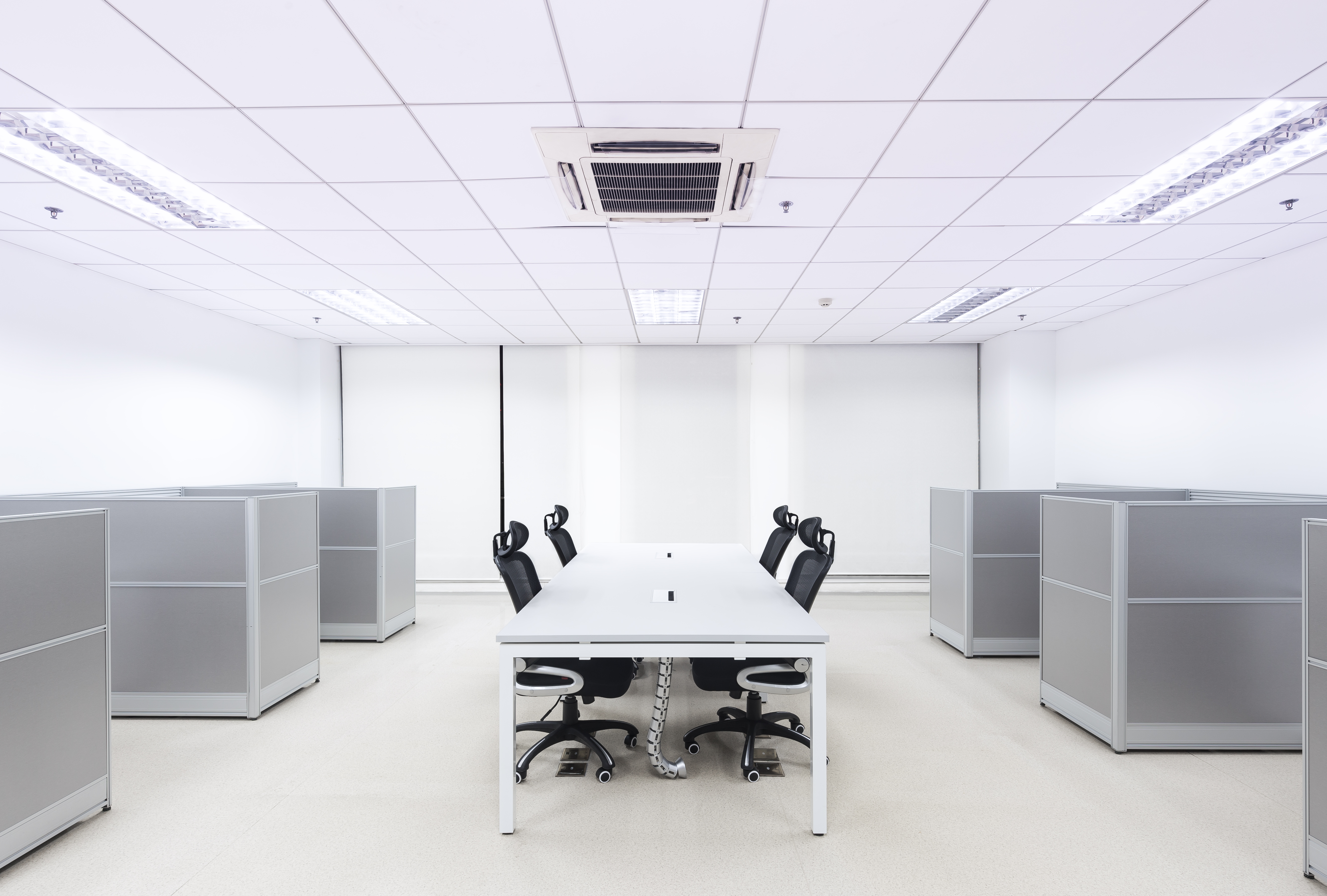Workplace air conditioning
Contents |
Introduction
The responsibilities of an employer regarding workplace temperature during summer is as important as during the warmer months. Failure to ensure a stable temperature can lead to an unproductive workforce as well as causing health issues, as a result of dehydration and other heat-related conditions.
Thermal comfort, the state of mind in terms of whether a person feels hot or cold, will also have an impact on workers' happiness. For more information, see Thermal comfort.
Workplace temperature is an important factor to monitor and manage, for both the safety and comfort of employees. Normal operating temperatures for workplace environments are vital to continued productivity.
Indoor conditions requirements
An indoor workplace requires a temperature that is regarded as ‘reasonable’. This is typically a temperature in the region of 15°C or slightly lower if there is strenuous work taking place [reference required 13 to 16°C are minimums not recommendations see Thermal_comfort_in_buildings#Regulation https://www.designingbuildings.co.uk/wiki/Thermal_comfort_in_buildings#Regulation].
Where air conditioning cannot be placed in a work environment – such as in an environment which requires a specific temperature for manufacturing processes – then fans should be used to ensure appropriate air flow. Sufficient space should also be provided to ensure freedom of movement.
Advantages and disadvantages
Many studies show that increased temperature can have a direct impact on productivity. Heat can make workers feel hot and sluggish. The warmer weather is also a disadvantage for hay fever sufferers - with running eyes and general discomfort having a direct impact on their productivity. A comprehensive air conditioning system allows for windows to remain closed throughout the summer and helps protect those suffering from the pollen of the outdoors.
As heat can increase moisture levels, which in turn leads to more mould and mildew forming. This can add to maintenance costs as well as potential respiratory issues for staff [reference required, condensation tends to form in colder, not warmer environments].
On the other hand, air conditioning can also dry out the work environment which can cause throat irritation and problems for workers who wear contact lenses. Also, extreme temperature changes from the outdoors to indoors can cause issues for workers who need to come and go frequently. Regulating the difference is important to ensure no discomfort in this situation.
Maintenance
Regular maintenance and checks are needed to ensure workplace air conditioning is working at optimal levels at all times. Like any piece of machinery, air conditioning needs to be checked and worked on to ensure performance is not affected at peak times of the year. This is done, amongst other things, to check for clogging due to dirt and debris in the filters and also changing them when necessary.
Overall, an effective and efficient workplace air conditioning system is integral; both to ensure maximum comfort and productivity in the warmer months of the year.
--Heritage Heating and Cooling 13:39, 21 Aug 2017 (BST)
Related articles on Designing Buildings Wiki
- Air conditioning.
- Air conditioning in non-domestic buildings.
- Cooling systems for buildings.
- Heating.
- Indoor environmental quality.
- Thermal comfort.
- Thermal pleasure in the built environment.
- Underfloor air conditioning at London Grade II listed landmark.
- Wellbeing and buildings.
- Workplace humidity.
Featured articles and news
A change to adoptive architecture
Effects of global weather warming on architectural detailing, material choice and human interaction.
How big is the problem and what can we do to mitigate the effects?
Overheating guidance and tools for building designers
A number of cool guides to help with the heat.
The UK's Modern Industrial Strategy: A 10 year plan
Previous consultation criticism, current key elements and general support with some persisting reservations.
Building Safety Regulator reforms
New roles, new staff and a new fast track service pave the way for a single construction regulator.
Architectural Technologist CPDs and Communications
CIAT CPD… and how you can do it!
Cooling centres and cool spaces
Managing extreme heat in cities by directing the public to places for heat stress relief and water sources.
Winter gardens: A brief history and warm variations
Extending the season with glass in different forms and terms.
Restoring Great Yarmouth's Winter Gardens
Transforming one of the least sustainable constructions imaginable.
Construction Skills Mission Board launch sector drive
Newly formed government and industry collaboration set strategy for recruiting an additional 100,000 construction workers a year.
New Architects Code comes into effect in September 2025
ARB Architects Code of Conduct and Practice available with ongoing consultation regarding guidance.
Welsh Skills Body (Medr) launches ambitious plan
The new skills body brings together funding and regulation of tertiary education and research for the devolved nation.
Paul Gandy FCIOB announced as next CIOB President
Former Tilbury Douglas CEO takes helm.
UK Infrastructure: A 10 Year Strategy. In brief with reactions
With the National Infrastructure and Service Transformation Authority (NISTA).
Ebenezer Howard: inventor of the garden city. Book review.
Airtightness Topic Guide BSRIA TG 27/2025
Explaining the basics of airtightness, what it is, why it's important, when it's required and how it's carried out.























